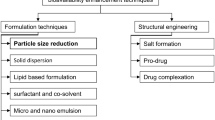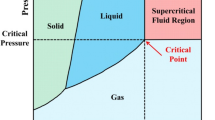Abstract
Highly concentrated colloidal latex particles from thermoplastics (low-density polyethylene) can be obtained by using phase-inversion emulsification of a polymer melt in which hydrophobically modified water-soluble polymers are used to provide surface activity. Initially, a water-in-polymer-melt emulsion is obtained and subsequently inverted to a polymer-melt-in-water emulsion when a critical aqueous phase volume is reached. After the phase inversion and subsequent dilution of the emulsion, if the solidification of the melt is carried out during mixing, another phase inversion takes place and water-in-solid-polymer aggregates are formed even if the phase volume of the aqueous phase is well above the critical value. These aggregates contain an aqueous phase encapsulated by the polymer. The kinetics of this phase inversion is studied and the use of the technique to obtain microcapsules from aqueous solutions is investigated.
Similar content being viewed by others
Author information
Authors and Affiliations
Additional information
Received: 15 December 2000 Accepted: 24 April 2001
Rights and permissions
About this article
Cite this article
Akay, G., Tong, L., Hounslow, M. et al. Intensive agglomeration and microencapsulation of powders. Colloid Polym Sci 279, 1118–1125 (2001). https://doi.org/10.1007/s003960100547
Issue Date:
DOI: https://doi.org/10.1007/s003960100547




